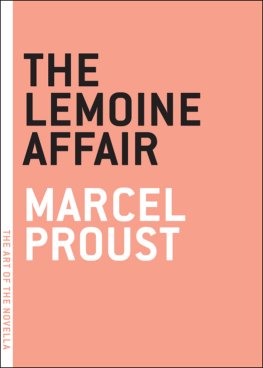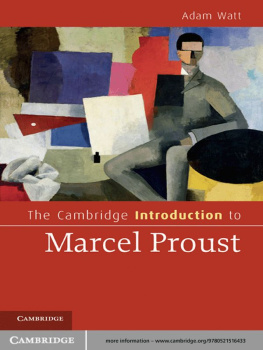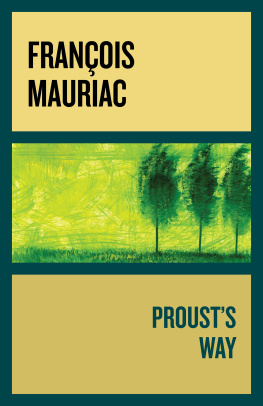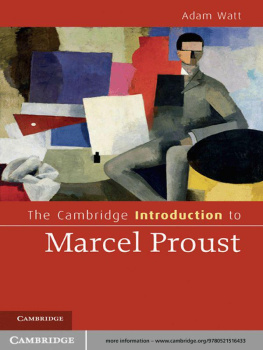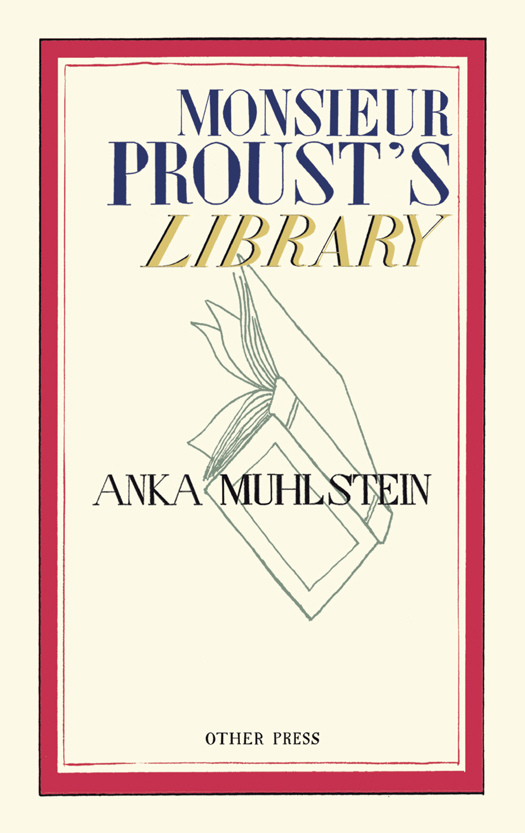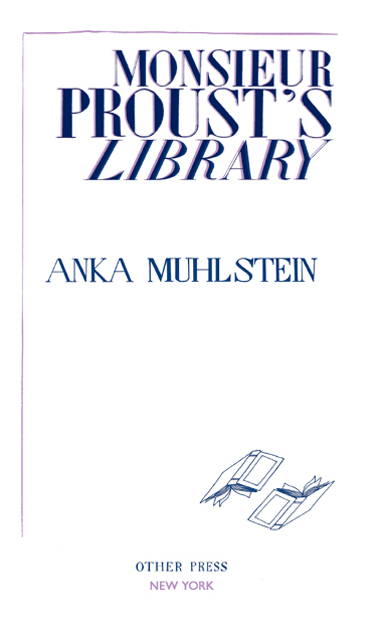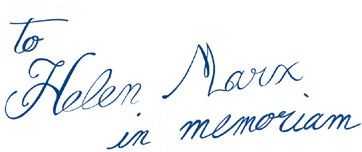also by Anka
Balzacs Omelette:
A Delicious Tour of French Food
and Culture with Honor de Balzac
Venice for Lovers
coauthored with Louis Begley
Elizabeth I and Mary Stuart:
The Perils of Marriage
A Passion for Freedom:
The Life of Astolphe de Custine
La Salle: Explorer of
the North American Frontier
Baron James: The Rise of
the French Rothschilds
Copyright 2012 Anka Muhlstein
Due to limitations of space, acknowledgments for
permission to reprint previously published material
can be found on .
Illustrations by Andreas Gurewich and Gary Roar.
Production Editor: Yvonne E. Crdenas
All rights reserved. No part of this publication may be reproduced or transmitted in any form or by any means, electronic or mechanical, including photocopying, recording, or by any information storage and retrieval system, without written permission from Other Press LLC, except in the case of brief quotations in reviews for inclusion in a magazine, newspaper, or broadcast. For information write to Other Press LLC, 2 Park Avenue, 24th Floor, New York, NY 10016. Or visit our Web site: www.otherpress.com
The Library of Congress has cataloged the printed edition as follows:
Muhlstein, Anka.
Monsieur Prousts library / Anka Muhlstein.
p. cm.
Includes bibliographical references.
eISBN: 978-1-59051-567-9
1. Proust, Marcel, 18711922Books and reading. 2. Proust, Marcel, 18711922Characters. I. Title.
PQ2631.R63Z78925 2012
843.912dc23
2012021629
v3.1
CONTENTS
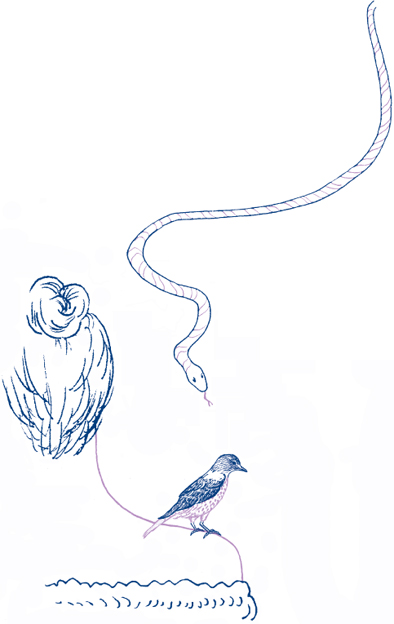
la recherche du temps perdu, known as In Search of Lost Time in English, is a novel divided into seven books: Swanns Way, Within a Budding Grove, The Guermantes Way, Sodom and Gomorrah, The Captive, The Fugitive, and Time Regained. I will refer to the novel as a whole either simply as the Novel or by the truncated French title La Recherche.
The volume and page numbers standing alone in roman type in the footnotes refer to the English text of the four-volume Everymans Library edition. The italicized references are to the three-volume French edition published by Robert Laffont in 1987.
I mention many characters from In Search of Lost Time, and some may not be familiar to every reader. The short list that follows is intended to help identify them.
The Narrator has no surname; only twice in the novel is he referred to as Marcel. When I speak of Marcel, I mean the Narrator, and Proust is a reference to the author.
The Narrators family includes the mother; the father; the grandfather; the grandmother; Aunt Lonie, a permanent invalid who lives in the family house in the little town of Combray; two great-aunts, sisters of the grandmother; and Franoise, the familys cook.
The Guermantes family, the epitome of aristocratic grandeur, includes Basin, the Duke de Guermantes; Oriane, the Duchess de Guermantes; Palamde, Baron de Charlus, the Dukes brother; the Prince de Guermantes, the Dukes cousin; Mme de Villeparisis, the Dukes aunt; and Robert, Marquis de Saint-Loup, the Dukes nephew.
Albertine Simonet is the young girl the Narrator falls in love with in Balbec, a summer resort in Normandy. She comes to live with him in Paris. His possessiveness and insane jealousy will drive her to flee from his control.
Bergotte, an admirable writer, is one of the three great artists in the novel, the others being Elstir the painter and Vinteuil the composer.
Nissim Bernard, a successful Jewish businessman, is the uncle of Albert Bloch. He is described as a comical old homosexual queen, obsessed by young men.
Bloch is a schoolmate of the Narrator, with very strong literary opinions and terrible manners.
Brichot, a professor at the University of the Sorbonne, is a pedant, obsessed by etymology.
Baron de Charlus, the younger brother of the Duke de Guermantes, is a brilliant and strange man whose homosexuality is revealed in the course of the novel.
Franoise, the cook, moves to Paris with the Narrators family after the death of Aunt Lonie and becomes the Narrators testy factotum.
Jupien is a vest maker. He is completely devoted to Baron de Charlus and does his best to satisfy all his fantasies. He finally abandons his trade and becomes, thanks to the Baron, the owner of a male brothel.
Legrandin is a country neighbor, a rabid and very well-read snob.
Charles Morel, a gifted violinist but corrupt and cowardly, submits willingly to Baron de Charluss protection, though he is himself attracted to women. He breaks with Charlus after a violent scene orchestrated by Mme Verdurin.
Marquis de Norpois, retired ambassador, friend of the Narrators father and Mme de Villeparisiss lover.
Robert, Marquis de Saint-Loup, the Narrators best friend, is in love with Rachel, a Jewish actress, but ultimately marries Gilberte Swann.
Charles Swann, the son of a Jewish stockbroker, is an old family friend and country neighbor of the Narrators family, and also an intimate of the Guermantes. A great amateur of the arts, his knowledge of literature, painting, and music is recognized by all. He marries Odette de Crcy, a lady of very doubtful reputation, after a long and tumultuous affair. They have a child, Gilberte.
Marquis de Vaugoubert, ambassador to the fictional court of King Thodose.
M. and Mme Verdurin are the hosts of an artistic salon. Mme Verdurin, the boss, reigns over it with an iron hand and excludes with decisive cruelty anyone she suspects of independence. They have mastered the art of hiding their social ambition.
Vinteuil, a great composer who leads such a modest and retired life in Combray that none of his neighbors and acquaintances are aware of his genius. He has a lesbian daughter who is always referred to as Mlle Vinteuil.
Whether they follow an established tradition or rebel against it, whether they are authors of classics or are considered innovators, rare are the writers who were not also great readers. Proust was no exception to this rule; reading had always been his earliest and most important source of pleasure and stimulation, and it remained such. He is distinguished from his colleagues, however, by the immense role that literature plays in his oeuvre.


